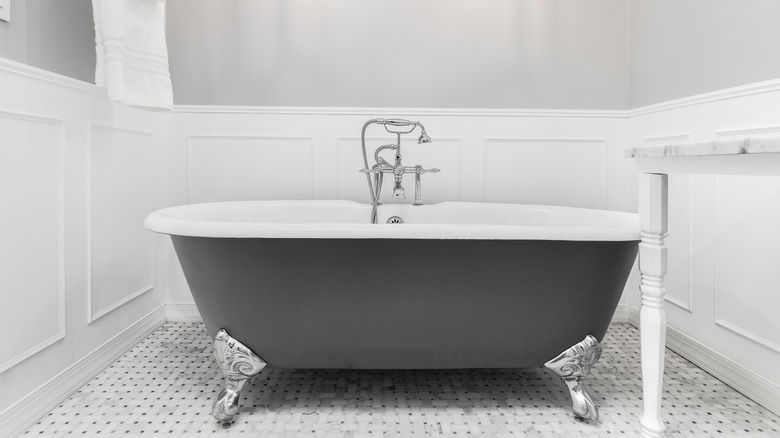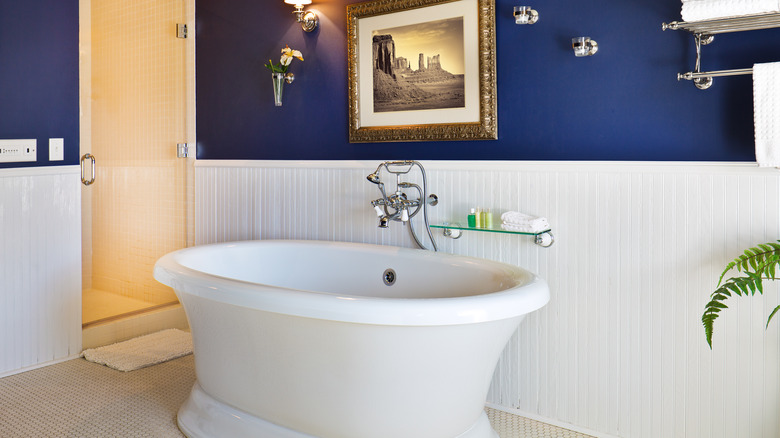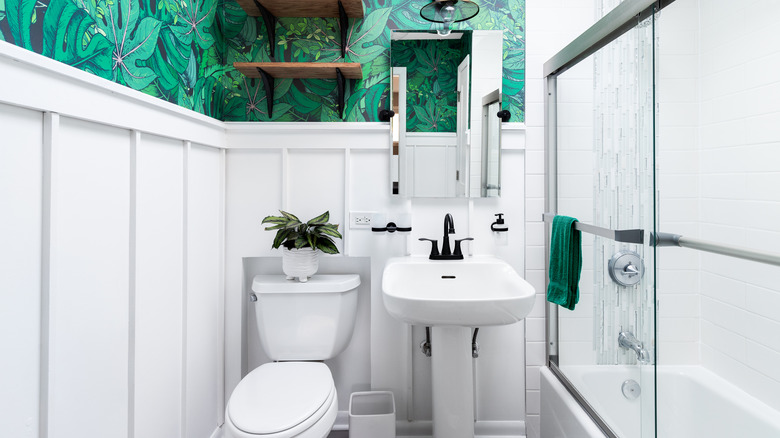Bathroom Wainscoting: Here's What It Is And Why You Should Consider It
Wainscoting is a type of decorative wood paneling that is attached to the lower part of the wall, often rising about three to four feet from the floor depending on the space. While it adds visual interest and sophistication to a space, its main purpose is to protect the wall. Therefore, elevating a bathroom with the charming look and essential functionality of wainscoting is an upgrade worth considering.
Originating in England during the Renaissance, the term wainscoting referred to multiple types of wood molding layered together to form an ornate yet functional wall panel treatment. Now the term is more general, typically referring to wood paneling in various styles that covers approximately the lower ⅓ of a wall (though there are exceptions that deviate from this).
The cost to install wainscoting can vary depending on the style and scale of your space, but in a small room like a bathroom, the interest and texture that it adds makes the minimal to moderate investment worth thinking about. Whether you outsource the work or do it yourself, adding decorative wainscoting can help your bathroom space function well and look incredible.
Why wainscoting is great to use in the bathroom
The major practical reason for considering wainscoting in a bathroom is because it functions as a fantastic water-resistant splash guard. Adding a coat of oil-based or hybrid paint (like water-based urethane paint) in a satin or semi-gloss sheen will make the wainscoting highly moisture-resistant, if not nearly waterproof. It can also be stained and sealed with a similar polyurethane for comparable results. Just like tile, which people often use on the bottom three-and-a-half to four feet of a bathroom wall, it protects against water splashes from the tub, sink, and shower overspray.
Perhaps the best reason to use wainscoting in the bathroom is for aesthetic purposes, as this beautiful panel millwork adds a high-end decorative touch to your home. While the term wainscoting typically brings an upscale traditional or cottage vibe to mind, there are many types and styles of wainscoting that can enhance the look of your home.
For example, a raised panel option with a beveled edge or library panel look with a beaded frame can add an opulent, stylish look in a more traditional setting. A beadboard or shiplap panel will give a charming, vintage cottage or farmhouse aesthetic to the space. Tongue and groove panels can be used for a rustic cabin feeling, while a more contemporary flat panel molding or vertical reeding would be perfectly suited to add some texture and character to a more modern space.
There are alternates to wood wainscoting in the bathroom
While wood is the traditional material used, modern technology has introduced many other materials in which you can build or get wainscoting. Vinyl wainscoting is extremely water and stain-resistant, making it ideal for a family bathroom that gets a lot of use. Medium density fiberboard (MDF) wainscoting can be created with material that is specifically treated for moisture resistance, so it will hold up nicely in a bathroom setting. Perhaps the most waterproof of the bunch is plastic solid surface or PVC wainscoting, which is even available in a finish that looks like wood grain without the fear of it rotting or warping.
While many homeowners install tile part way up a bathroom wall for protection, a fun way to mix the two concepts is to create a wainscoting look out of tile. Installing penny, subway, or square tiles with a piece of decorative tile or wood trim (painted out to match the tile) at the top and a tile baseboard at the bottom gives the same decorative paneled look, but in a ceramic or porcelain tile perfectly suited to use in a bathroom. There are even linear tiles that mimic the look of beadboard, to really lean into the playful combination of ideas.


